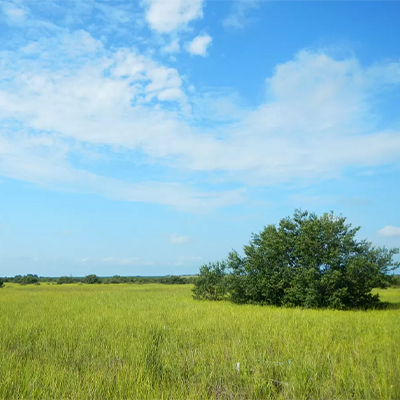Mangroves vs. Salt Marsh
By Dr. Loraé T. Simpson Director of Research and Conservation, Florida Oceanographic Society
(This article was originally posted on the Smithsonian Institution website in November 2020.)
Mangroves are a common sight in south Florida, but rare in the salt marshes of the north since they cannot survive extended periods of freezing temperatures. However, a warming climate has made freezes less common, spurring a more than 100 percent increase in mangrove cover in northern Florida since 1985. Areas that were once pure salt marsh are slowly shifting into mangrove forests.
This is a dramatic shift – and whether it could be beneficial or detrimental to the ecosystem as a whole has not been clear. But a new study, published in September in the journal Ecosystems, on these ecosystem shifts provides some evidence that the change from salt marsh to mangrove habitat may actually provide more opportunities for climate change mitigation, without harming the function of the ecosystem itself.
Though big, flashy animals often steal the show, the stage upon which the play unfolds is built from plants; when plant species change, everything else in the ecosystem follows. As tall, woody species move in, or encroach upon, herbaceous grasses, the functions of the salt marsh ecosystem also change. Trees create more shade, which may alter the microbes in the soil, or the animals using the landscape. The disappearance of a once-common grassland insect in a new, forested landscape may throw off the food web and nutrient cycle.
Over time, the accumulation of these small, seemingly inconsequential changes may ultimately shift the entire function of the ecosystem—including how and at what rate it sequesters carbon. But what those changes mean in the long term is not well understood, especially in the face of rapid climate change impacts.
As part of a multi-year project from 2014 to 2017, I and Dr. Ilka ‘Candy’ Feller, a senior mangrove ecologist with the Smithsonian Environmental Research Center, studied how the increase in mangrove cover by black mangrove (Avicennia germinans) would affect ecosystem functioning of habitat currently dominated by salt marsh cordgrass (Spartina alterniflora), and documented the changes being observed at the local level. We were joined on the project by collaborators from multiple other academic and government agencies, including the University of Alabama and the University of Virginia.
We studied many different angles to this shift, but a main research question involved looking at the decomposition of fallen leaves in a changing mangrove-salt marsh system. Fast-growing grasses may provide more nutrient inputs to the system, due to their herbaceous nature, which may alter the magnitude and timing of species growth. But with more mangroves, which drop leaves throughout the year, we wanted to know how the changes in the inputs to the system might affect the breakdown and turnover of nutrients available. Nutrient pools affect everything from microbial activity to soil quality, which has implications for the plant health of the community, and subsequently the insects and animals that would depend upon them for food and shelter.
We ran a one-year experiment at five sites along the Atlantic coast of Florida, from Sebastian to St. Augustine. We put out “litter bags” – mesh bags filled with mangrove and salt marsh leaves – to document the decomposition of plant material over time. This mimics plants’ shedding of leaves onto the sediment surface, but in a controlled manner. Using these bags, we can calculate how long plant litter takes to break down without the interference of herbivores like crabs and snails, giving us insight into how the system cycles nutrients. We set bags on both mangrove and salt marsh sediments to test how the introduction of a new species to the system would break down and contribute nutrients to the soil.
Decomposition has been shown to be driven by environmental factors--temperature, light, salinity--in many systems. However, we found that the environmental changes expected due to mangrove encroachment did not alter plant litter breakdown. Instead, it was the shift in plant species biomass, which resulted in differences in litter quality available, which altered the breakdown of material in the system and subsequent nutrient cycling.
In short, we found that even though the dominant species may greatly differ on the landscape, the nutrient cycling isn’t greatly impacted. A mangrove-dominated landscape would be just as rich and beneficial as a salt marsh, from an ecological perspective. What’s more, an increase of belowground biomass from mangrove roots may also increase the amount of carbon the ecosystem can sequester from the atmosphere.
Additionally, more mangroves may mean better mitigation against climate change impacts. With mangroves’ unique structure—they are well documented as buffers against storm damage and erosion—their climate-induced migration to higher latitudes may help coasts keep pace with sea level rise. Mangroves moving northward into new zones may also increase carbon dioxide sequestration from the atmosphere, and combat other severe weather impacts from hurricanes and floods. Expansion of these natural barriers along the Atlantic coast could also enhance the sustainability of human coastal communities as we face impending changes in a warmer future.
Though the landscape of northern Florida’s future may be more forested, the multitudes of new mangroves may make it possible to better adapt to climate change, and still benefit from the abundance of natural resources of the former salt marsh habitat.
Mangrove Encroachment Alters Decomposition Rate in Saltmarsh Through Changes in Litter Quality. Ecoystems, September 2020. DOI: 10.1007/s10021-020-00554-z

